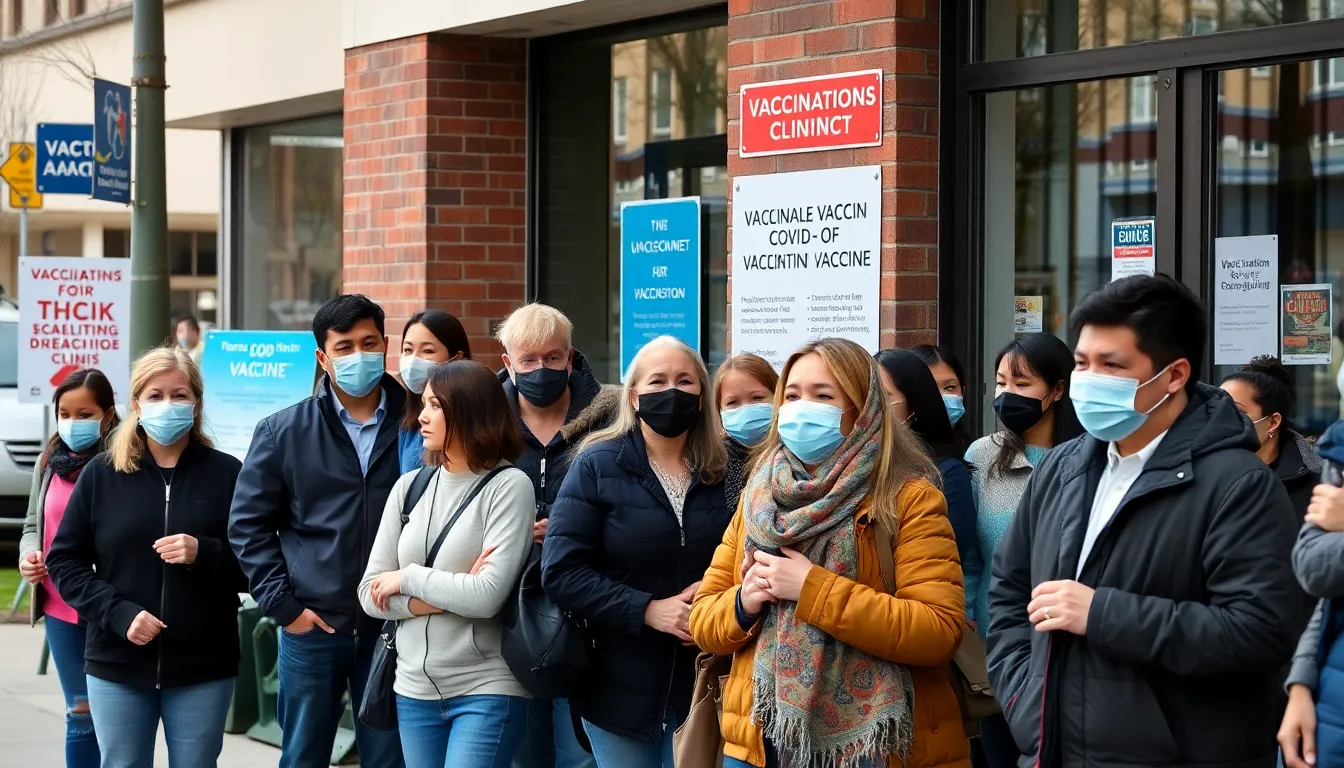As the delta surge of COVID-19 begins to recede, many are breathing a sigh of relief. It’s like finally finding that missing sock after weeks of searching—only to realize winter is just around the corner, bringing its own set of challenges. The pandemic may have taken a backseat for now, but it’s crucial to stay alert and prepared for what lies ahead.
With colder months approaching, the battle isn’t over. Flu season, holiday gatherings, and the potential for new variants loom large on the horizon. It’s time to swap out those summer shorts for cozy sweaters and gear up for a winter that promises to be anything but ordinary. Staying informed and proactive will be key in navigating this frosty season while keeping health and safety at the forefront.
Delta Surge of Covid-19 Recedes, Leaving Winter Challenge Ahead
The Delta surge of COVID-19 peaked during the summer of 2021, leading to significant hospitalizations and public concern. Hospitals across the United States reported an increase in patients, putting immense strain on healthcare systems. Vaccination efforts ramped up during this period, contributing to a decline in severe cases as more people became immunized.
Communities faced challenges with rising case numbers, especially in areas with low vaccination rates. Mask mandates reappeared and social distancing recommendations were reinstated in many locations. Schools also adapted by implementing safety protocols to protect students and staff.
As the surge recedes, case numbers have dropped substantially. The Centers for Disease Control and Prevention (CDC) noted a decrease in hospitalizations and deaths attributed to COVID-19. Despite this reduction, the threat of new variants looms, necessitating continued monitoring and vaccination efforts.
Flu season approaches, which introduces additional complexities. Public health officials urge individuals to get vaccinated against both flu and COVID-19 to mitigate risks. Holiday gatherings may pose challenges as people gather indoors, raising potential transmission rates.
Surveillance for emerging variants remains critical. Experts emphasize the need for vigilance as colder weather often leads to increased indoor activity. Awareness and preparedness for the upcoming winter months can help manage cases effectively while maintaining community health.
Key Factors in the Recurrence of COVID-19

Several key factors influence the recurrence of COVID-19 as the delta surge recedes, requiring attention to vaccination rates and public health measures.
Vaccination Rates
Vaccination rates play a crucial role in controlling COVID-19 spread. Regions with higher vaccination coverage experience significantly reduced case rates. The CDC indicates that communities with 70% or higher vaccination rates see lower hospitalization incidences. Vaccination hesitancy among certain demographics remains a challenge, especially in areas with low uptake. Responsible public health campaigns can encourage those hesitant to get vaccinated. Ensuring vaccine availability and accessibility promotes higher participation throughout populations. Monitoring vaccination trends is essential in guiding public health responses.
Public Health Measures
Public health measures significantly impact COVID-19 recurrence. Consistent mask mandates contribute to limiting virus transmission, particularly in crowded or indoor settings. Social distancing helps reduce contact between individuals, lowering infection rates. Enhanced testing efforts identify and isolate cases promptly, curbing outbreaks. Targeted public health campaigns promote hygiene practices, like frequent hand washing, which aids in virus prevention. Local authorities must adapt these measures based on current case data and variant emergence. Effective communication about these measures encourages community compliance and supports overall health.
Impact of the Delta Surge on Healthcare Systems
The delta surge put immense pressure on healthcare systems across the United States. Hospitals experienced record levels of patient admissions, particularly in areas with low vaccination rates. Many facilities faced staffing shortages, as burnout among healthcare workers surged. Increased demand for intensive care units (ICUs) strained medical resources, resulting in prolonged wait times for non-COVID patients. Some regions reported healthcare being significantly overwhelmed, prompting the activation of emergency response protocols. Continued monitoring of patient flow remains necessary as hospitals adapt to fluctuating case numbers.
Strain on Hospitals
Hospitals encountered unprecedented challenges during the delta surge. Patient admissions surged, with some states reporting a 300% increase in COVID-19 cases compared to pre-surge levels. Staff burnout attributed to prolonged emergency response periods contributed to critical shortages. Hospitals expanded their capacity by converting non-traditional spaces into treatment areas. Intensive care units became the focal point for medical staff, emphasizing the need for additional resources and support. Equally important, healthcare systems began investing in telehealth services to ease the burden on hospital facilities.
Mental Health Challenges
Mental health challenges rose sharply during and after the delta surge. Healthcare workers faced heightened anxiety and stress due to increased workloads and exposure to trauma. Surveys indicated that 62% of frontline workers experienced symptoms of depression. Patients with pre-existing conditions saw disruptions in their care, exacerbating feelings of isolation and distress. Furthermore, public fears regarding COVID-19 impacted overall community mental health, leading to a surge in demand for counseling and support services. Strategies to address these mental health needs became a priority, with many organizations expanding resources for both patients and providers.
Preparing for Winter Challenges
As the delta surge recedes, the focus shifts to upcoming challenges during winter months. Vigilance remains crucial for communities as they navigate cold weather and potential health threats.
Importance of Continued Vigilance
Continued vigilance is essential as flu season approaches alongside COVID-19 variants. Surveillance systems must monitor case trends to detect any emerging threats. Public health officials emphasize vaccinations to boost immunity within communities. Enhanced communication regarding health guidelines helps maintain public awareness. Community members who stay informed can better protect themselves and others from potential outbreaks. Regular updates through local health channels create a more prepared population.
Strategies for Public Health Officials
Public health officials need strategies that prioritize vaccination efforts and community engagement. Targeted campaigns can enhance vaccination rates in vulnerable populations. Consistent messaging about health protocols will reinforce safety precautions as cold weather sets in. Collaboration with local organizations strengthens outreach efforts and builds community trust. Engaging stakeholders will encourage adherence to mask mandates and social distancing where needed. Data-driven decision-making allows health officials to allocate resources effectively. Investing in mental health support for healthcare workers improves system resilience during peak seasons.
Conclusion
The receding delta surge offers a moment of relief but doesn’t eliminate the challenges that lie ahead. As winter approaches the focus must shift to preparedness and vigilance. With flu season and potential new variants on the horizon staying informed and proactive is critical for community health.
Vaccination remains a key tool in combating both COVID-19 and influenza. Public health officials must continue to prioritize outreach and education to ensure that everyone understands the importance of vaccinations. Additionally investing in mental health resources for healthcare workers is essential to maintain a resilient healthcare system.
Communities must come together to navigate this winter safely. Through collaboration and consistent messaging about health protocols individuals can better protect themselves and each other in the months ahead.















